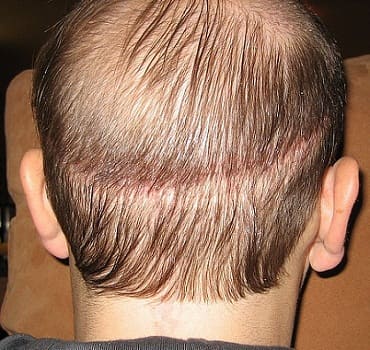
Effective Solutions for Thicker Beard
August 17, 2015
Complications of a Hair Transplant Surgery
August 19, 2015Cause of Hair Shedding After a Hair Transplant

The ultimate goal of a hair transplant surgery is to permanently restore lost hairs. But what is the purpose of going through the pain and agony and spending thousands of dollars on surgical hair restoration if the transplanted hairs start shedding within a few weeks after the surgery. Yes, it does happen. 90% of the hair transplant patients shed the transplanted hair between the 3rd and 5th week following the surgery. But don’t worry, it is very much normal and just reaction of your angry scalp to the trauma that it has undergone during the surgery.
Hair shedding after a hair transplant, also known as shock loss, refers to loss of apparently healthy hairs from the recipient area or the donor site, and sometimes both, after the surgery. We totally understand that seeing your healthy hair falling out can be quite distressing, especially after you have just spend thousands of bucks to reverse earlier hair loss. But you don’t need to take much tension as this is just a temporary phase and your locks will grow back automatically once the shock loss phase is over.
Here we will share with you causes of hair shedding after a hair transplant and ways to prevent shock loss. But before that it is important to understand the difference between shedding and shock loss. Shedding refers to loss of newly transplanted hairs just a few weeks following the surgery. It is part of hair transplant surgery and is not much of an issue as the transplanted hair will automatically start growing back within the next few weeks, and after that they will grow at a normal hair growth rate of half an inch per month.
Shock loss, on the other hand, refers to the existing healthy hairs on your scalp. Shock loss does not happen to the transplanted hair, it rather occurs to the hairs in the donor or recipient area that were otherwise healthy prior to the surgery.
What causes shock loss?
Since shock loss occurs due to the trauma caused to the scalp during follicle extraction and graft insertion, it primarily depends on the hair transplantation technique used. Some surgical hair restoration techniques are more likely to trigger shock loss as compared to others. For example, the Follicular Unit Extraction (FUE) surgery, despite being a technologically more advanced technique, is more likely to trigger shock loss in the donor area than the traditional strip method transplant. This is because pneumatic pressure used for extraction of hair follicles during FUE causes more trauma to the scalp, causing the hair follicles in the neighborhood to miniaturize.
Follicular Unit Transplant on the other hand, causes less shock to the donor area. But if the surgeon attempts to harvest a large number of follicles during a single attempt or does not close the wound resulting from strip removal correctly, this can permanently damage the surrounding scalp tissues and hair follicles.
Sometimes, shock loss is simply a natural process that was scheduled to happen even if you had not undergone hair transplant surgery. This is the case when the follicles of your existing hair have already miniaturized and would have fallen out on their own within the next few weeks or months and the stress of surgery just causes them to fall out a little earlier.
Another reason behind shock loss in the recipient area is the site preparation. If the surgeon makes incisions too closely or they are too large, the surrounding hair can fall out following the transplant.
Tips To Minimize Chances Of Shock Loss:
1. The first and foremost tip is to choose a skilled hair transplant surgeon. He will first evaluate your skin type and hair loss and then choose the right surgical skills to minimize the chances of shock loss.
2. Choosing the hair transplant method is also important. Go for one that causes minimum shock to the scalp. Stem Cell FUE is the best technique when it comes to avoiding shock loss.
3. Keeping the size of incisions for graft insertion small can also help minimize the risk of shock loss.
Free Consultation:
To know more about cause of hair shedding after a hair transplant make a free online consultation now and let our experts guide you.

